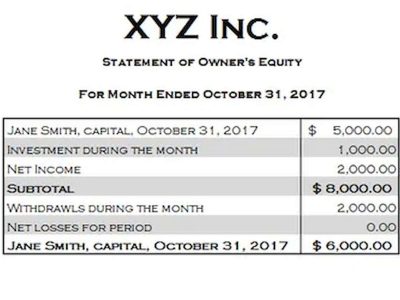
However, unlike EBIT, EBITDA also excludes depreciation and amortization expenses, providing a better overview of the operating profitability. Free Cash Flow to Equity (FCFE) is the amount of cash generated by a company that can be potentially distributed to the company’s shareholders. FCFE is a crucial metric in one of the methods in the Discounted Cash Flow (DCF) valuation model. Using the FCFE, an analyst can determine the Net Present Value (NPV) of a company’s equity, which can be subsequently used to calculate the theoretical share price of the company. FCFF, or Free Cash Flow to Firm, is the cash flow available to all funding providers (debt holders, preferred stockholders, common stockholders, convertible bond investors, etc.). This can also be referred to as unlevered free cash flow, and it represents the surplus cash flow available to a business if it was debt-free.
Operating Cash Flow Ratio

It is the main source of fund needed to meet the operational expenses of its core activities. Investing and financing activities are usually cash flow negative, making positive cash flow from operations essential in the long run. It is cash flow from operations that will be used to make capital expenditures, design new products, make acquisitions (investing activities), pay dividends, buy back stock, and/or reduce debt (financing activities). You could calculate working capital from the balance sheet even if you didn’t have a cash flow statement. Earnings Before Interest, Taxes, Depreciation & Amortization (EBITDA) is one of the most commonly used metrics of a company’s profitability. Similar to Earnings Before Interest and Taxes (EBIT), EBITDA primarily assesses the company’s profitability from regular business activities.

How to Calculate Free Cash Flow to Equity (FCFE) from CFO

FCF gets its name from the fact that it’s the amount of cash flow “free” (available) for discretionary spending by management/shareholders. For example, even though cfo formula a company has operating cash flow of $50 million, it still has to invest $10million every year in maintaining its capital assets. For this reason, unless managers/investors want the business to shrink, there is only $40 million of FCF available.

Cash Flow from Operations (CFO)
- Let us look at the different cash flow from operations ratio formula used to calculate the ratio in various ways.
- It is possible to derive capital expenditures (CapEx) for a company without the cash flow statement.
- Further, the value of a company’s equity can be determined by discounting the FCFE using the company’s cost of equity while the FCFF when discounted at the WACC gives us the firm value.
- Next, we need to find payments to suppliers which equal inventories purchased plus opening accounts payable minus closing accounts payable.
- With that said, an increase in NWC is an outflow of cash (i.e. ”use”), whereas a decrease in NWC is an inflow of cash (i.e. “source”).
FCFF is good because it has the highest correlation of the firm’s economic value (on its own, without the effect of leverage). The downside is that it requires analysis and assumptions to be made about what the firm’s unlevered tax bill would be. On the other hand, if accounts payable (A/P) were to increase, the company owes more payments to Coffee Shop Accounting suppliers/vendors but has not yet sent the cash (i.e. the cash is still in the company’s possession in the meantime).
Types of Free Cash Flow

Below, we will walk through each of the steps required to derive the FCF Formula from the very beginning. Therefore, cash flow from operations is more objective and less prone to accounting manipulation in comparison to net income, yet is still a flawed measure of free cash flow (FCF) and profitability. Starting from net income, non-cash expenses like depreciation and amortization (D&A) are added back and then changes in net working capital (NWC) are accounted for. The “Cash Flow online bookkeeping from Operations” is the first section of the cash flow statement, with net income from the income statement flowing in as the first line item.
- The difference between EBITDA and OCF would then reflect how the entity finances its net working capital in the short term.
- However, remember the rule that each item included must be recurring and part of the core operations—thereby, not all non-cash items are added back (e.g., inventory write-downs).
- Since EBITDA excludes interest and taxes, it can be very different from operating cash flow.
- Lastly, we subtract all the changes to net working capital, in this case, 3,175, and get an FCFF value of 24,856.
- But Capex is located in the cash flow from investing (CFI) section and thus was not yet accounted for.
